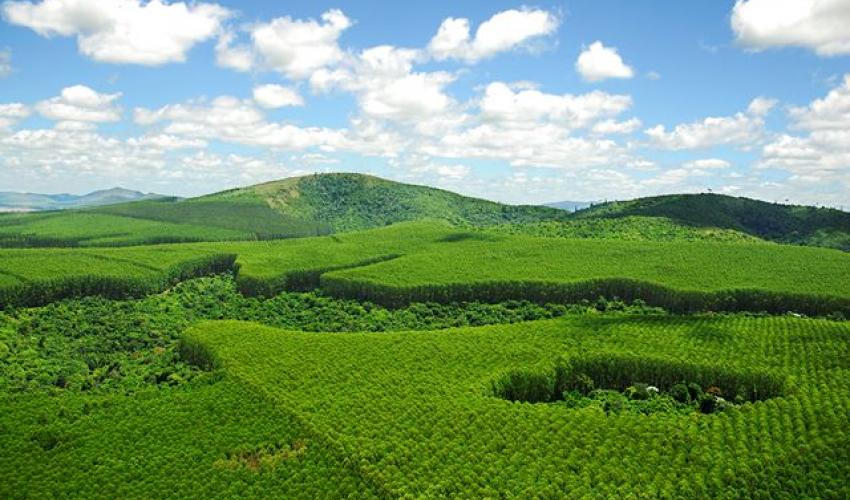For 22 years, Veracel, Stora Enso's joint venture in Brazil, has been planting seedlings of native tree species in local rainforests as part of the Atlantic Rainforest Program.
For 22 years, Veracel, Stora Enso's joint venture in Brazil, has been planting seedlings of native tree species in local rainforests as part of the Atlantic Rainforest Program.
The goal has been to restore over 5,000 hectares of Atlantic rainforest, and to establish ecological corridors. These corridors help maintain biodiversity by enabling animals and plants to move around and spread naturally, instead of being confined to isolated patches of surviving rainforest. This is particularly important for prey animals such as deer, monkeys and armadillos that need the protection of natural rainforest vegetation.
Veracel has come a long way since the first 207 seedlings of native species were planted in 1994. This spring, a major milestone was reached as more than four million seedlings have now been planted within the programme. This amounts to 5,695 hectares of restored rainforest, located in the municipalities of Belmonte, Eunápolis, Itabela, Itagimirim, Porto Seguro and Santa Cruz Cabrália in southern Bahia.
A dual mission to protect and restore
Veracel owns about 215,000 hectares of land in Bahia. Half of this area consists of degraded lands formerly used for cattle grazing where Veracel plants eucalyptus trees. The other half is dedicated to different forms of rainforest conservation such as the protection of existing rainforest habitat and the active restoration of degraded forests. Veracel never cuts timber in areas of natural rainforest.
An example of protecting existing rainforest is the 6,000-hectare Veracel Station Private Reserve of Natural Heritage which is used for educational and research purposes. More active restoration work is needed in damaged rainforests that will not revert to natural conditions unaided. Veracel and its partners typically plant about 80 native tree seedlings per hectare in such areas, covering a total of 400 hectares annually.
"Each year before we start the restoration process, we evaluate satellite images and look for grazed areas or areas in the early stages of regeneration that could be restored to connect fragments of surviving Atlantic rainforest," explains Humberto Amoedo, an expert on rainforest planning at Veracel.
When choosing new sites for restoration, opportunities to create such ecological corridors are a major deciding factor. This goal is in line with the guidelines of the Central Corridor of the Atlantic and Conservation International. The 5,695 hectares of rainforest so far restored have connected more than 65,000 small, isolated fragments of rainforest to larger areas of Atlantic rainforest in Veracel's lands in southern Bahia. This is excellent news for armadillos and other creatures seeking to expand their ranges.











